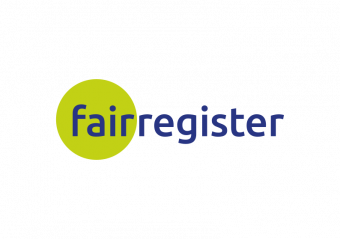
Making clear terms of use visible
How the service came about
fairregister emerged as a service from the faircommons project funded by netidee and is the new development of RegisteredCommons. Since 2006, RegisteredCommons has primarily served the Creative Commons community to provide additional legal certainty. If a work is provided with a license, it is often difficult for someone who wants to use it to prove later that it was actually published under this license.
The faircommons project has redeveloped RegisteredCommons as fairregister. To this end, the registration process has been revised and simplified. The terms of use can be defined for all to see. Creative Commons and common open source licenses are available for licensing the works. All works from the RegisteredCommons platform were transferred in 2023.
Digital works such as texts, images, music or videos are readily shared online and, if necessary, made available to a community for further use. For the author, it may be important that the name is mentioned when the work is reused and that the work may only be used under certain conditions. Conversely, it may be important for the user of a work that the rights to the work are clarified accordingly and that there is legal certainty for further use.
The authors
The author would like to register the work under an appropriate license in order to be able to prove the date of authorship in a legally secure manner.
The users
The user would like to search for licensed works in order to be able to use them in a legally secure manner for his / her own work, for example.
This results in two requirements for the service, the licensing of works and the search for licensed works.
In addition to the possibility of licensing works, fairregister should also offer a search option for licensed works. Artists, creative professionals and media producers who depend on the works of other artists for their work can thus search for specific content and check which conditions apply to the use of a work on the basis of the licensing.
Works previously deposited on RegisteredCommons are to be made statically accessible.
The goal of fairregister is to ensure legal certainty for works with a license selected during registration. More works are to be defined as commons and made accessible to the general public. fairregister is to establish itself in the long term as a directory for openly licensed works.
1) User wants to register a work
In this example, a photo under a CC-license.
There are two ways to do this.
2a) Access via the web-service
Call up fairregister.net and switch to the tab register work.
Upload the work and enter information.
2b) Access via the nextcloud
The work is stored in the nextcloud and is thus secured there.
It is planned to offer fairregister as an app for the nextcloud as well.
3) Licensing
To select a CC-license, two questions must be answered.
According to the answers a license will be assigned.
4) Save metadata
Metadata (information about the work and the author) is stored in the fairregister database and in IPFS.
5) InterPlanetary File System (IPFS)
The IPFS functions as an immutable database. The data is stored there hashed to ensure legal security.
6) Save work
The author can decide if he / she wants to be responsible for the backup of the work or if the fairregister file system / IPFS is used.
7) Share works
Registered works can be made available to a wide public, in case of plagiarism or misuse, the time of authorship can be proven.

